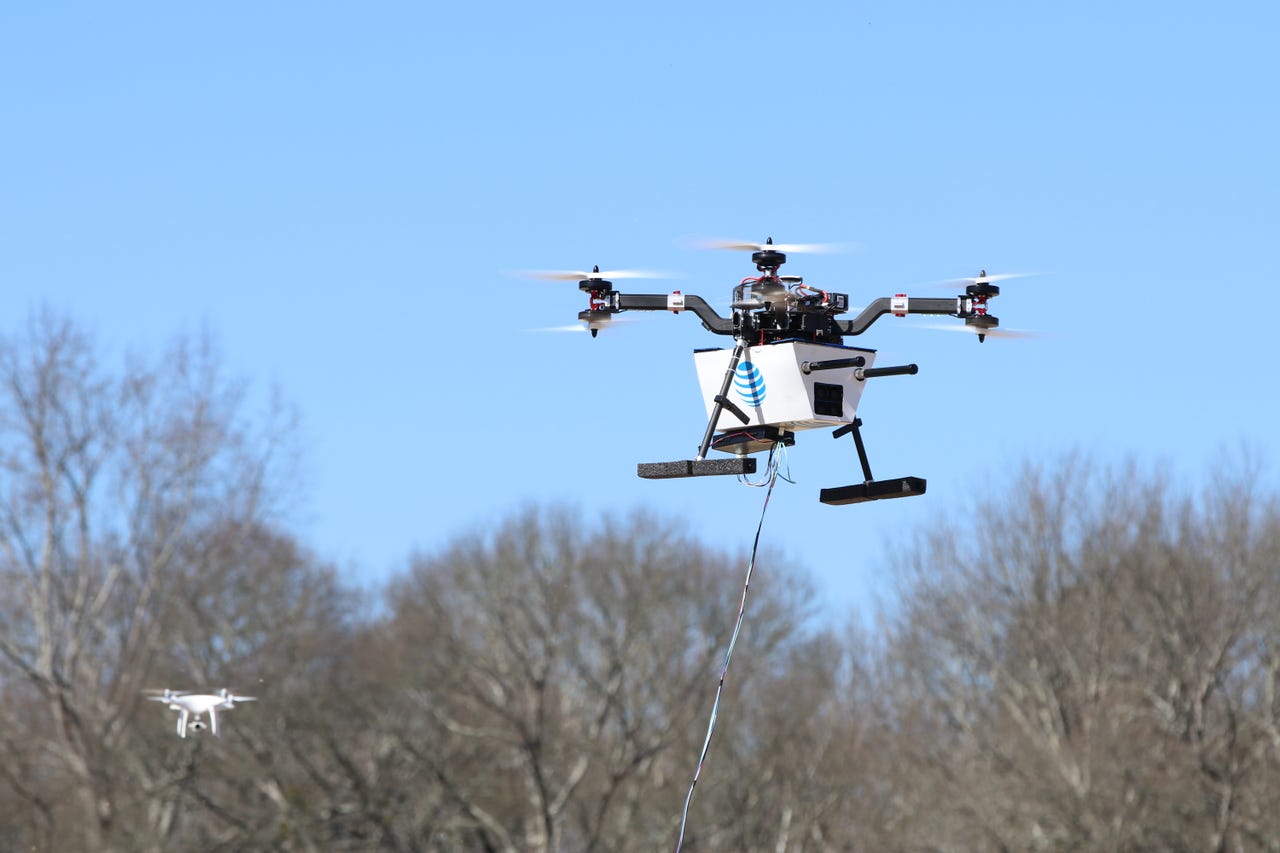AT&T completes its first "flying COW" test flight


AT&T is testing LTE-enabled drones.
AT&T this week saw its flying COWs in action for the first time.
The company is building LTE-enabled drones for a range of uses cases. They could be deployed if networks go down in the event of a disaster, to assist in scenarios like forest fires, or for large events like concerts.
On Tuesday and Wednesday, the company conducted its first test-flights of drones equipped with LTE radios. AT&T says it is the first wireless company to test this technology.
Over those two days, the company conducted several simple flights, no longer than around 10 to 15 minutes, in a "dead zone" about an hour outside of Atlanta. The drones successfully transmitted and received LTE signals as expected, AT&T drone program director Art Pregler told ZDNet.
AT&T parked a Cell on Light Truck (COLT) onsite to provide coverage before the drone was deployed. Once the drone was in place, the truck's satellite was switched off. The team regained coverage as soon as the drone was activated. In these initial tests, AT&T flew the drones to various heights, going as high as 100 feet up. A team of engineers walked through the field to measure the signal.
"Even with our test up to just 100 feet, we flew it at various altitudes, and you could see the coverage area expanding," Pregler said. He declined to say just how far the signal reached, but he said, "It was good, and it's going to get better."
Ultimately, one drone will be able to cover an area up to 40 square miles, AT&T says.
Once in operational status, the drones will be able to fly at just under 400 feet, capped by FAA regulations. The FAA's drone rules create other limitations: There must be a pilot ready to take control of a flight, even if the drone can fly itself. Additionally, commercial drones are only permitted to fly during daylight hours, but Pregler said AT&T is confident it will receive a waiver for its flying COWs to operate at night since they would be tethered in place.
AT&T's next round of tests are slated for next month. Pregler said it could potentially have some operating on a private network sometime this year, though getting them approved for public networks would be a longer process.